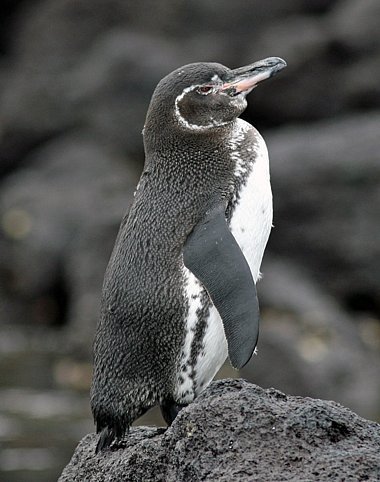The Galapagos Islands & Mainland Ecuador
A superb land and sea trip to one of the World's foremost ecotourism destinations!
| Destination | |
|---|---|
| Focus | |
| 2026 Dates | |
| Duration | 23 Days |
| Guides | |
| 2026 Price | £9995 pp £985 single supplement. Deposit £2000 pre-flight airport hotel and lounge are inc. |
| Max Group Size | 12 |
- Free Bird Guide
FREE copy of Birds of Ecuador with every room booked on this holiday.
- Enquire
This holiday combines the stunning diversity of mainland Ecuador with the remarkable landscape and ecology of the unique world of the Galápagos Islands. An amazing South American experience.
Mainland Ecuador
About 1600 species have been recorded on mainland Ecuador, and this exciting holiday is expected to locate a quarter or more of these birds. We take you from snow-covered mountain peaks and high páramos (unique mountain moorlands), down through Andean valleys and many gradations of temperate and subtropical forest, as we visit the key habitats and iconic locations of this world-famous bioregion. Important locations include Milpe Bird Sanctuary, San Isidro and Wildsumaco. This holiday is ideal for those who wish to experience the incredible avian diversity of Ecuador accompanied throughout by a friendly, highly experienced guide.
We expect a list of around 475 species, including many hummingbirds (well over 40 species). Some of the key birds are unforgettable Andean Condor, spectacular and colourful Cock-of-the-Rock, strange-looking Oilbird and incredible Long-wattled Umbrellabird, and we hope to give you excellent views of these. We may even be lucky to see an owl which many local ornithologists consider to be new to science! We will be seeking to maximize our list, whilst enjoying the whole experience of being in this wonderful country, birding at a gentle pace on a non-intensive itinerary. We stay in five locations including Quito itself, ideal for those visiting Ecuador on their first birding trip. Transfers by comfortable coach will take two hours or less between most lodges, with two drives of around four hours each being the longest. These journeys can of course be delayed by birding considerations!
We stay in very comfortable hotels and lodges throughout, and good quality accommodation, often with hummingbird feeders just feet away, is a consideration of this holiday. In many places, hummingbird feeders are active at dawn, and birders and photographers will both appreciate the opportunities presented even from hotel bedrooms and verandahs!
The Galapagos Islands
This is a destination where you become accustomed to being surprised. Nothing quite compares to the joy of the islands’ wildlife, or the sense of wonder and privilege felt while spending time with animals which don't run or fly away when humans approach, and which are truly unique treasures of our earth.
This group of 13 major islands and dozens of smaller islets and rocks is the result of volcanic activity, producing a living laboratory of evolution filled with an extraordinary population of unique species, which have developed apart from human influence. For nature lovers, the perfection is even greater, birds and more birds, playful sea lions, exotic plant life, volcanoes and haunting land seascape.
On this tour we enjoy eight days exploring at a relaxed pace, walking amongst spectacular scenery to look for endemic birds and into the Highlands to see endemic reptiles in the wild. The holiday is land based, using local boat services to visit other islands, amid the company as we travel of passing petrels, shearwaters, boobies, gulls, dolphins, turtles, seals and sharks.
A holiday offering exceptional value, combining the unique Galapagos (very expensive if done separately) with tremendous birding in mainland Ecuador. Our local agents have good relations with key accommodations in wonderful locations, and we are especially pleased to be offering this tour again in 2026.
DAY 1: Wed 9 September 2026 UK - ECUADOR
Relax in our complimentary VIP airport lounge, then fly from London to Quito where we will be met by our local guide and transferred to our comfortable modern hotel. We stay overnight in the recently restored Cultura Manor Hotel, a delightful heritage listed building now operating as a boutique hotel.
DAY 2: Thurs 10 September THE LAND OF HUMMINGBIRDS: QUITO – TANDAYAPA
This morning we start early, travelling northwest of Quito crossing the western slopes of the Andes range heading towards Tandayapa valley. Our birding begins at the Yanacocha Reserve, in the high cloud forest at 10,500ft, among one of the most biodiverse environments on Earth. The reserve protects an area of elfin Polylephis Forest, home to many hundreds of bird, butterfly and orchid species. In this habitat the variety of hummingbirds is a major highlight; Shining Sunbeam, Mountain Velvet-breast, Great Sapphirewing, Buff-winged Starfrontlet, and three species of puffleg including endemic and highly endangered Black-breasted Puffleg, gradually recovering from near extinction, and Purple-backed Thornbill can be found, amongst colourful flocks of tanagers, flowerpiercers, and furnariids. Antpittas and tapaculos call from the dense forest.
After lunch we visit Tambo Quinde, a private reserve, located in the Tandayapa valley at 1700m above sea level. We walk the trails, looking for any number of species including Cock of the Rock, Quetzals, Hummingbirds, Toucans and Tanagers, this is a wonderful beginning to our holiday.
Late afternoon we depart for Bellavista Lodge, for a unique stay above the forest canopy! The 360-degree view from the dome allows you to gaze upon the rugged peaks of Pichincha and Cotacachi in the distance. Bromeliads and orchids, hummingbirds and tanagers, toucans and antpittas, all vie for our attention and can be seen from your balcony!
DAY 3: Fri 11 September MINDO: MASHPI AREA – THE OILBIRD RESERVE
Before breakfast we enjoy local birding at the Lodge feeders and within the adjacent forest. After breakfast we head for Mashpi Reserve, in a part of the cloudforest where around 500 birds have been recorded. This is another superb birding location, famous for its impressive list of ‘Choco’ endemics (36 species). This cloud forest is also extremely rich in plants, from ferns and bromeliads to many orchids. Later we visit El Chontal, where as many as 100 Oilbirds make their homes in the famous Los Tayos Cave, which is actually a deep, dark ravine.
Late afternoon we depart for Sachatamia Reserve, a marvellous private ecological reserve close to the protected forest area of Mindo-Nambillo. This region is one of the most bird-rich areas in the world, and from the feeders at the Lodge, to the birds deep in the forest and along the roadside, you will marvel at the range and diversity of species on offer here. Overnight for three nights at Sachatamia Lodge, a favourite place of Heatherlea holidays!
DAY 4: Sat 12 September MINDO: RIO SILANCHE RESERVE – MILPE RESERVE
After an early breakfast we drive to Rio Silanche, a tropical lowland reserve which holds an incredible diversity. This important site is home to many endemic birds, including Dusky Pigeon, Purple-chested Hummingbird, Little Woodstar, Choco Trogon, Double-banded Graytail, Stub-tailed Antbird, Slate-throated Gnatcatcher, Scarlet-breasted Dacnis, Scarlet-and-white Tanager, Blue-whiskered Tanager, Gray and Gold Tanager, Blue-headed Parrot, Marron-tailed Parakeet, White-bearded Manakin, Scarlet-thighed Dacnis, Chestnut-mandibled Toucan, Black-headed Tody Flycatcher, Slaty-capped Shriketyrant, and many others.
In the afternoon we visit Milpe Bird Sanctuary, a 155-acre reserve considered to be among the finest sites in Ecuador, and defined as an ‘Important Bird Area’ by BirdLife International. The reserve is a mixture of primary forest, secondary forest, woodland and pasture, and a recent census recorded 247 birds. Amongst these are many of the most spectacular local endemics, such as Plumbeous Forest-Falcon, Moss-backed Tanager, Glistening-green Tanager, Chocó Trogon, Club-winged Manakin, Indigo-crowned Quail-Dove, Double-banded Greytail, Fulvous-vented Euphonia, Emerald and Scarlet-and-white Tanagers, near-threatened Blue-whiskered Tanager and Long-wattled Umbrellabird.
DAY 5: Sun 13 September MINDO: THE INCREDIBLE UMBRELLA BIRD – RÍO BLANCO
Early in the morning we head to Los Bancos to see Long-wattled Umbrellabird, still found in reasonable numbers here at the Luis Agila property. The birds fly from tree to tree searching for insects or fruit, and we watch for males inflating their long wattle, another unique experience in this fabulous place.
We also visit Mirador del Río Blanco, with incredible valley views, where we can find many different tanagers, and hummingbirds such as tiny Green Thorntail and beautiful Green-Crowned Brilliant. Back at Sachatamia Lodge we may have time to look for special birds including Giant and Scaled Antpitta, Choco Toucan, Scaled Fruiteater, Tanager-Finch and Club-winged Manakin. Other possibilities include Golden-headed Quetzal, Toucan Barbet, Masked Trogon, Golden-naped Tanager, Beryl-spangled Tanager, Strong-billed Woodcreeper, Black and white Owl, Wattled and Sickle-winged Guan, Bronze-winged Parrot, Sparkling Violet-ear, Andean Emerald, Booted Racket-tail and Long-tailed Sylph.
DAY 6: Mon 14 September THE AMAZING COCK OF THE ROCK
We set off early to witness one of the most amazing birding experiences - the Cock-of-the-Rock lek. The males make bizarre sounds, flip about acrobatically, and display to the watching females. Here at the famous Paz de las Aves Refuge, we may also be treated to exceptional views of Giant, Ochre-bellied, Moustached and Yellow-breasted Antpittas. We also visit the feeding station with chances to see Black-chinned and Blue-winged Mountain-tanager, Toucan Barbet, Dusky Piha, Sickle-winged Guan, Crimson-rumped Toucanet and more. This is a memorable experience, not least because of the 'special relationship' between our host, Angel, and the antpittas, but we can't really describe it - you will have to see for yourself! A typical and generous breakfast is enjoyed alfresco before we return to Sachetamia Lodge and lunch, followed by a final look at the birds of the forest before afternoon transfer returning to Quito for dinner and overnight at Cultura Manor Hotel.
DAY 7: Tues 15 September ANTISANA ECOLOGICAL RESERVE
A complete change today, as we travel through a stunning landscape of open páramo, forested ravines, rocky outcrops and glaciated lakes. Antisana Ecological Reserve is one of the best places to see 'páramo' birds, amongst which the most impressive is Andean Condor. This huge vulture has the largest wingspan (about 10.5 feet) of any raptor in the world. Although there are of course no guarantees, you have every chance of seeing this magnificent bird. Other species of this elevated landscape include Black-chested Buzzard-Eagle, Variable Hawk, Black-faced Ibis, Paramo Ground Tyrant, Paramo Pipit, Sedge Wren, Baird’s Sandpiper, Cinereous Harrier, Bar-winged and Stout-billed Cinclodes, Black-faced Ibis, Shining Sunbeam, Red- rumped Bush-Tyrant, Paramo Pipit, Giant Conebill, and Spectacled Whitestart.
We visit Lake Mica (Laguna Micacocha) to see waterbirds including Silvery Grebe, Andean Teal, Andean Ruddy Duck, Yellow-billed Pintail, Andean Coot, plus many land birds such as Aplomado Falcon, Andean Gull, Andean Lapwing and Carunculated Caracara. Other species include Andean Snipe, Ecuadorian Hillstar, Stout-billed Cinclodes, Bar-winged Cinclodes, Tawny Antpitta, Streak-throated Bush-tyrant, Red-crested Cotinga, Scarlet-bellied Mountain-tanager, Buff-breasted Mountain-tanager, and Black-backed Bush-tanager.
Later in the day we drive through the Papallacta region. This area is classified as ‘humid temperate forest’, characterized by more stunted trees and thicker canopy, cooler climate, and a different avian composition. There are well conserved patches of Polylepis forest here, and it is an excellent place to observe high-altitude species including Variable Hawk, Many-striped Canastero, Tawny Antpitta, Sword-billed Hummingbird, Great Sapphire-wing, Scarlet-bellied Mountain-tanager, Torrent Duck, Torrent Tyrannulet and beautiful White-capped Dipper. We enjoy dinner and overnight at Guango Lodge, on Ecuador's eastern Andean slope.
DAY 8: Wed 16 September PAPALLACTA – SAN ISIDRO LODGE
After breakfast we will hike through the trails of this lodge looking for more bird species like Andean Guan, Plushcap, Slaty Finch, Gray Breasted Mountain Toucan, Pale Naped Brush Finch, Gray Hooded Bush Tanager, Hooded Mountain Tanager, Pearl Treerunner, Mountain Avocetbill, Tourmaline Sunangel, Torrent Duck, White capped Dipper and more.
After lunch we continue on to San Isidro, at c. 6,800 ft. in a zone mostly blanketed by extensive humid forest. This combination of factors means agreeable temperatures and great birding! Specialities include Black-chested Fruiteater, Long-tailed Antbird, Barred Antthrush, and little-known Peruvian Antpitta. Night birds include Andean Potoo (rare), Rufous-bellied Nighthawk (regular) and both Rufous-banded and Mottled Owls. The most absorbing night attraction in recent years has been a large and beautiful owl, only currently known from the forests next to the lodge. Studies are underway to determine its identity, to date it is considered to be a species of the genus Ciccaba, often included in the larger Strix genus. Exciting stuff!
In the evening we have a nocturnal walk with these owls and nightjars in mind. Overnight for two nights at San Isidro Lodge.
DAY 9: Thurs 17 September SAN ISIDRO LODGE TRAILS
After breakfast we have a full day birding right around the lodge, so we can take our time in this special place. Some of the regular birds include Montane and Olive-backed Woodcreepers, Golden-crowned Flycatcher, Rufous-crowned Tody-Flycatcher, Black-billed Peppershrike, Inca Jay, Bluish Flowerpiercer and Subtropical Cacique. We also visit Antpitta feeders, where you may see White-bellied Antpitta only feet away, and maybe even very rare Peruvian Antpitta. We return to the lodge for dinner and overnight, with another chance for nightjars and owls.
DAY 10: Fri 18 September SAN ISIDRO LODGE- WILDSUMACO
After breakfast we depart for Wildsumaco Lodge. On route we visit The Loreto Road, officially known as the Jondachi-Hollín-Loreto-Coca Road, famous for its birding opportunities. Some notable target birds here include Dark - breasted Spinetail, Ash-browed Spinetail, Montane Foliage-gleaner, Lined Antshrike, Foothill Antwren, Olivaceous Greenlet, Yellow-whiskered Chlorospingus, and Bronze-green Euphonia.
Next we visit Narupa reserve, which protects a large block of eastern Andean foothill forest. Narupa has a growing list of birds that currently includes over 300 species. Five globally threatened species have been recorded, including the flagship species Cerulean Warbler, a long-distance migrant that breeds in eastern North America and winters in northwestern South America.
In the afternoon we head to the Cordillera de Los Huacamayos to walk through one of the specialised birdwatching trails. Among the many different species possible here are Black-billed Mountain-toucan, White-bellied Antpitta, Spillman’s Tapaculo, Bicolored Antvireo, Greater Scythebill and very local White-rimmed Brush-finch among others.
Late afternoon we arrive to our accommodation for the next three nights. Wildsumaco Lodge is a very comfortable base with pleasant social areas, a restaurant, bar and a cozy porch from where we can admire magnificent views and birds flying around the lodge.
DAYS 11: Saturday 19 September WILDSUMACO WILDLIFE SANCTUARY
Today we explore the trails of Wildsumaco Wildlife Sanctuary, located on a ridge in the Andes' Eastern Foothills close to Sumaco National Park and Napo Galeras National Park. Given the strategic location of this place between the Andean foothills and the River Amazon, it is little surprise the Sumaco area holds some of the richest avifauna in the world. A wonderful mix of cloud forest species, foothill specialities, and typically Amazonian birds share Wildsumaco's lush subtropical rainforest with a myriad of other animals. Many of the birds here are rare, endangered, or very difficult to see elsewhere.
Just a few of the birds; Gray-tailed Piha, Blue-rumped Manakin, Military Macaw, Buff-breasted Tody, Blackish Rail, Tropical Screech-owl, Black-banded Crake, and Chestnut-crowned Gnateater. Short-tailed Antthrush and Wing-banded Wren often sing, while more uncommon species including Gray-throated Leaftosser and Plain-backed Antpitta are seen occasionally. Very rare Yellow-throated Spadebill has a territory along the Piha Trail, and at any time endangered Military Macaw or rare Spot-winged Parrotlet might fly by, or Black Hawk-Eagle soar overhead. We may also see Wire-crested Thorntail, Yellow-breasted Antwren, and Coppery-chested Jacamar. Several colourful species of tanager may be accompanied by Ecuadorian Tyrannulet, recently-described Foothill Elaenia, and sometimes Scarlet-breasted Fruiteater.
The lodge is located at about 4600ft, and the reserve ranges from 3900ft to 4900 feet, with incredible panoramic views of the Rio Pucuno Valley and the Andes beyond. A very special place!
DAY 12: Sun 20 September AMARUN PAKCHA RESERVE
After breakfast we make our way to to Amarun Pakcha reserve, located close to Wildsumaco. Nestled on the slopes of the Sumaco Volcano, the community invites bird lovers to a world where nature and culture are inseparably intertwined. Hummingbirds are regular guests to both the feeders and to the wide variety of flowering plants in the areas. Photographers can take the opportunity to capture these brilliant and obliging little birds at close quarters. If we are lucky, we may find foot prints of large mammals like the Andean Spectacled Bear, the Amazonian Tapir, the Mountain Tapir. In the afternoon we return to Wildsumaco for our last night here, to continue enjoying the feeders and trails.
DAY 13: Mon 21 September WILDSUMACO – QUITO
After breakfast we have one last opportunity to enjoy this amazing place, then we return to Quito, perhaps stopping on the way to search for Orange-breasted Falcon and Cliff Flycatcher. We take lunch en-route, arriving late afternoon to the excellent Cultura Manor Hotel in Quito.
DAY 14: Tues 22 September QUITO – GALAPAGOS (SANTA CRUZ ISLAND)
Today we will travel to one of the most amazing places of the world, The Galapagos Islands. Early in the morning we transfer to the airport to catch our Galapagos flight. On arrival, we transfer to Puerto Ayora where a delicious lunch will be waiting in a local restaurant. In the afternoon we transfer to the Highlands of San Cristobal Island in order to visit El Junco lagoon that is a crater lake of an extinct volcano rather than a lagoon, and it is the only fresh water spring in the Galapagos Islands.
The fresh water attracts both Magnificent and Great Frigatebirds that come into drink. Watching the frigatebirds shear over the water surface is quite a spectacular sight. Other waterbirds that we can expect to see here include the endemic subspecies of White-cheeked Pintail, Common Gallinule and possibly some migrant waders. Darwin finches that we will be looking for in the highlands include the Small Tree Finch and the Woodpecker Finch. The latter is famous for its ability to use a ‘tool’ while foraging and therefore are often nicknamed “carpenter finch”. ‘Tools’ include cactus spines or short twigs that they actively use to pry grubs out of tree branches. The species is usually easy to recognize by its distinct movements which are reminiscent of those of a nuthatch. The endemic and Endangered San Cristobal Mockingbird is our most important target on this island, and although we may require some luck to find it, the rare Galapagos Rail has been reported from the highlands of San Cristobal. We keep a keen look out before returning to Puerto Baquerizo, where we settle down for our first night on the islands! Casa Opunita is home for the next three nights.
Day 15: Wed 23 September SAN CRISTOBAL ISLAND: PUNTA PITT
After breakfast we travel by speedboat again in order to reach Punta Pitt located at the north of San Cristobal Island. This is a combination of eroded volcanic cones and is sparsely vegetated by endemic plants. The environment provides protection and warmth for species including sea lions, lava lizards, marine iguanas, frigates, pelicans and boobies. Punta Pitt is one of only two places on the Galapagos islands where you can see three species of boobies nesting in the same area, Red-footed, Blue-footed and Nazca Boobies. Other birds today might include storm petrels, shearwaters, phalaropes, Lava Gull, Lava Heron, Great Blue Heron, Peregrine Falcon, Great Frigatebird, Magnificent Frigatebird, Chatham Mockingbird, Small Ground Finch, Dark-billed Cuckoo, Large Ground Finch and Large Cactus Finch. If we are lucky we might see rare Galapagos Petrel at sea. We return to our hotel in time for dinner.
DAY 16: Thurs 24 September ESPAÑOLA ISLAND DAY TRIP
After an early breakfast we depart to Española Island. In the morning, we visit Punta Suarez, a rocky point of land that sustains one of the most impressive and varied colonies of seabirds in Galapagos. Along its southern shore, steep cliffs rise up from the sea for a spectacular view of soaring birds and the famous blowhole. A noisy colony of Sea Lions and curious Hood Mockingbirds greet us as we land on their beach. We meet a multitude of Blue-footed Boobies, Masked Boobies, Waved Albatross, Red-billed Tropicbirds, Galapagos Shearwater, Phalaropes, Large Cactus Finch, Galapagos Hawk and Marine Iguanas as we walk gently across the volcanic landscape.
We take lunch on board and in the afternoon visit Gardner Islet, a great place to snorkel and where it is possible to see fascinating creatures including snake eels, marble rays, diamond rays, Galapagos pufferfish, plenty of red-lipped batfish and the occasional Hammerhead Shark.
DAY 17: Fri 25 September SAN CRISTOBAL– FLOREANA – ISABELA ISLAND
Today we begin with a visit to Floreana Island, where if conditions permit, we first circumnavigate Champion Islet to search for extremely rare Floreana Mockingbird. The species is critically endangered, and the surviving population is tiny. It survives on two small satellite rocks that are located close to Floreana (Champion and Gardner Islet by Floreana).
We then continue to Puerto Velasco where we depart for Asilo de la Paz in the highlands of Floreana, looking for Medium Tree Finch, the only site for this extremely rare bird. We also visit a tortoise reserve and the freshwater spring. Lunch is in a local restaurant and in the afternoon, we continue onwards to San Cristobal. Late in the afternoon we arrive at Isabela island, where we overnight at Cormorant Beach House Hotel for three nights.
DAY 18: Sat 26 September ISABELA ISLAND: SIERRA NEGRA VOLCANO & MARSHLANDS
Today we set off early with the Sierra Negra Volcano in our sights!. Sierra Negra is the largest and one of the most impressive volcanoes in the archipelago, and we hike up the trail to the caldera, which is approx 10km wide. The caldera is our best place to look for Galapagos Martin, and we also seek Galapagos Rail, Woodpecker Finch, Green Warbler Finch, Small Tree Finch and Galapagos Flycatcher. En-route we stop in Campoduro where a delicious lunch will be waiting for you. On the return journey to Puerto Villamil, we stop at the small Flamingo pond before our afternoon adventure to the 'Humedales', or Marshlands. This place has a pristine ecosystem of tidal mangrove-rich lagoons that is the habitat of flamingos and migratory birds, and a great place to see several species of Darwin Finches, stunning Mangrove Warbler and many others.
After a busy day, we return to relax and rest at our comfortable hotel.
DAY 19: Sun 27 September ISABELA ISLAND: CORMORANT BEACH & IGUANA COVE
After an early breakfast we take a small speedboat to Iguana Cove, where we have the opportunity to see one of the most amazing endemic species of the Galapagos, Flightless Cormorant, the largest species of cormorant in the world. Other birds here include incredible Galapagos Penguin, Magnificent Frigatebird, shearwaters, phalaropes, Greater Flamingo and finch species. Afterwards we return to Puerto Villamil and our hotel.
DAY 20: Mon 28 September SANTA CRUZ ISLAND: THE HIGHLANDS
After a delicious breakfast we depart to the highlands of Santa Cruz. This is an area that is continually changing and we ascend through all seven different vegetation zones. Here we visit a pair of large pit craters called “Los Gemelos", one of the best places for Woodpecker Finch, Large Tree Finch, Green Warbler Finch and others, and then continue to Media Luna where with luck we may see Galapagos Rail. We drive to El Chato, a private farm where we take lunch and see Giant Tortoises in the wild. This is a good place for Vegetarian Finch and with luck Paint-billed Crake. Late afternoon we will return to Puerto Ayora and Hotel La Isla.
DAY 21: Tues 29 September SANTA CRUZ ISLAND: THE HIGHLANDS
Today we visit the Charles Darwin Research Station where we learn first hand about the conservation and research efforts in the islands and see the Giant Tortoise hatchlings and breeding program, which is saving several races from extinction. During this visit we have the chance to look for birds around the Charles Darwin Station, including Small, Medium and Large Ground Finch. Galápagos Mockingbird can also be found here. Later we transfer to the airport in order to catch our flight back to Quito where we stay again at the excellent Cultura Manor Hotel.
DAY 22: Wed 30 September FLIGHT HOME
After collating a huge birdlist, our guide will collect you after breakfast for transfer to the airport to catch the international flight back to London, arriving on Thurs 1 October 2026.
Please note: all itineraries are given as a guide only. Actual holiday content may vary according to the judgement of your guide, and elements beyond our control (eg weather).
What's included in your holiday price:
- return scheduled flight London – Quito - London. Internal flight Quito - Galapagos - Quito. Airport transfers.
- full-board accommodation at hotels and lodges, picnic/lodge lunches
- ground transportation, National Park entry fees including Ingala Card.
- the services of your leaders.
- departure tax from Ecuador, incidental tips, and the services of local guides.
- The Heatherlea Pre-Flight Service offers everything you need at the airport, including hotels, car parking, airport lounges, regional flights, and upgrades. Let Heatherlea take the strain! Pre-flight airport hotel and lounge included free of charge, subject to terms and conditions. Read more..
Free Field Guide! - Birds of Ecuadorby Robin Restall and Juan Freile.
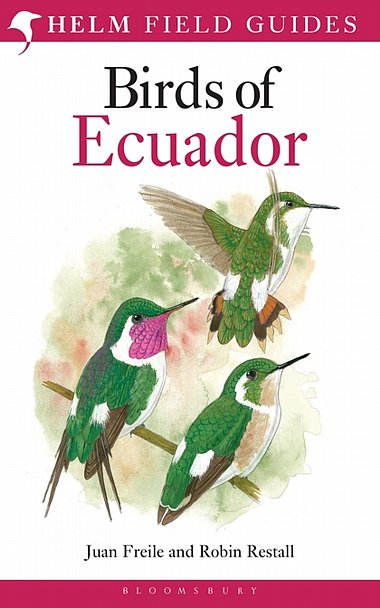
What's not included in your holiday price:
- holiday insurance, optional tips to local guides, drinks, and other personal expenses. Any additional expenses not covered by the itinerary above.
More holiday information
Accommodation: is in comfortable hotels and lodges. All accommodation is en-suite.
Food: many regional specialities exist in Ecuador. Food is good and generally to European tastes.
Walking: Walking will be generally easy, on marked paths and trails, and you should expect around a couple of miles each day. An average level of fitness is required. We may have to walk slightly further to see antpittas, though this is optional. It is possible we may have to take a walk of around three miles to see Long-wattled Umbrellabird, though we have more than one chance to see this extraordinary bird.
Weather: will be mostly hot, though it is sometimes overcast, and humid after showers. Temperatures will be mostly between the 15C and 27C. In mid-afternoon, the weather is pleasant and good for birding.
Insects: Mosquitoes, and ticks can be a problem in some areas. A good insect repellent is recommended, though some areas are pest-free.
Group size: is restricted to 12 clients maximum.
Entering Ecuador: Residents of European Union countries (including UK) do not need a visa. United Kingdom citizens will need a valid passport. Citizens of other nations should contact the nearest Ecuador Embassy for entry requirements. Your passport should be valid for a minimum period of 6 months from the date of entry; this is a strict legal requirement from the Ecuadorean government. Please note, it is mandatory for tourists to carry a valid health insurance policy. Please ensure you take a copy of your health/travel insurance with you when you travel.
Flights: are by scheduled airline from London Heathrow. We may be able to offer flight arrangements from another airport and/or or quote without flights. If you wish to add an extension either before or after your holiday, please contact us and we will be happy to arrange this for you.
Bird Photography: Opportunities are often superb, and generally very good.
Your leaders
Expert Local leader - Andrés Trujillo One of the most experienced guides in Ecuador, Andrés is a bilingual naturalist guide who has led many times here for Heatherlea and is a favourite with our guests. He has tremendous enthusiasm, excellent knowledge of Ecuadorian history, nature and an incredible knowledge of birding.
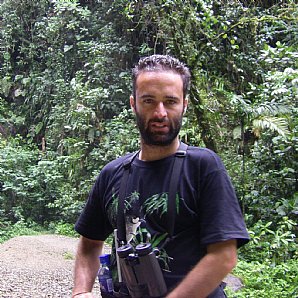
Andres Trujillo
Why choose Heatherlea for your birding and wildlife holiday in the Americas?
Our overseas holidays are planned with care to offer great birding and wildlife, led by capable Leaders who really look after you. Every holiday is run the 'Heatherlea Way', and we hope our Overseas Adventures remind you of the quality and care so many of you enjoy in Scotland. That means rewarding and exciting days in the field, and good quality accommodation and meals, with a real flavour of the country we are visiting. Heatherlea always seek to include the personal touches that make all the difference.
Heatherlea holidays are not ‘dawn to dusk’ expeditions. Our less-intensive approach is ideal for those who want to relax whilst experiencing the best wildlife watching, and wherever possible we organise early or late activity on an optional basis. We also take sensible breaks when in very hot places and regular comfort breaks on every holiday whenever possible. All itineraries are planned carefully around the best wildlife opportunities, and you won’t miss out on memorable wildlife, whilst enjoying relaxed, informal days that are great fun.
The really important part of any wildlife holiday is the experience for you, our valued customer. Heatherlea invest in many things to offer you the best possible service;
- We have been organising birding and wildlife holidays for over 30 seasons, and have a highly experienced and capable office team. We also offer a telephone and email service outside normal office hours.
- Heatherlea overseas holidays have a maximum of 12 clients per trip, putting the emphasis on personal service, and helping you get the best possible experience.
- Our holidays often include things which others might invite you to pay yourself, for instance Departure Taxes and tips to hotels.
- All elements of our holidays are sold under our own licence, ATOL 6113. Under ‘Flight-Plus’ legislation it is a legal requirement of any tour operator to hold an ATOL licence for the supply of any overseas holiday where a flight is involved, if that holiday includes either overseas accommodation and/or car hire. It can be a criminal offence for an operator to book flights as part of a package without an ATOL licence. Heatherlea also hold full Tour Operator Insurance for your added protection.
- Heatherlea is your complete wildlife holiday provider. Our ‘Back Office’ team can organise all your pre-flight and other travel needs. Our specialists will help you book the right services, at the best price. Book holiday extensions through us, and your ATOL protection is extended further. We don’t charge extra for this service.
- Heatherlea is a limited company, registered in Scotland, and registered to pay VAT (applies to all holidays within the European Union).
Trip Reports
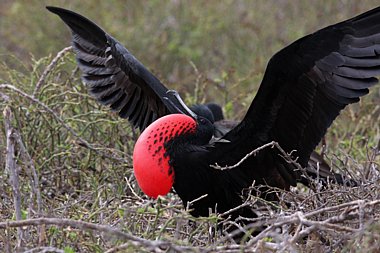
Magnificent Frigatebird Galapagos Penguin 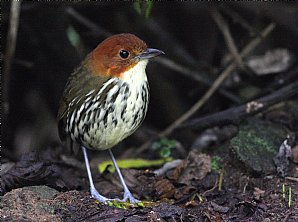
Chestnut-crowned Antpitta 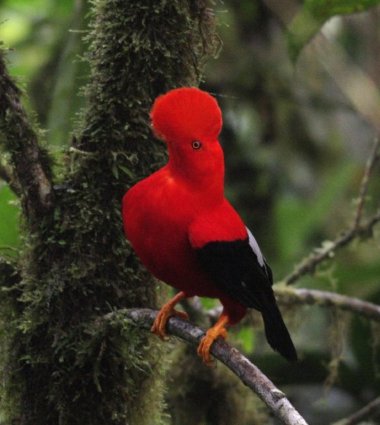
Cock-of-the-Rock 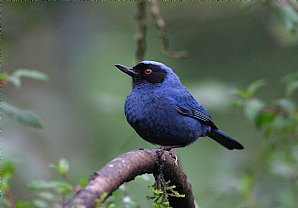
Masked Flowerpiercer 
Sword-billed Hummingbird 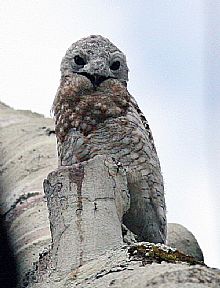
23 Great Potoo 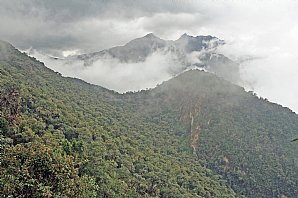
Cloud-Forest 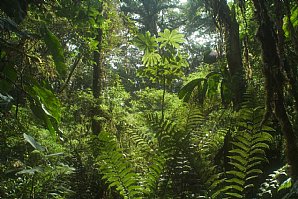
2005-01-19-101302 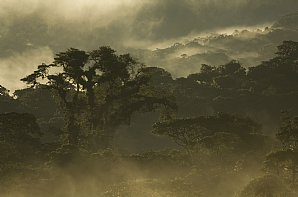
2007-11-02-061559 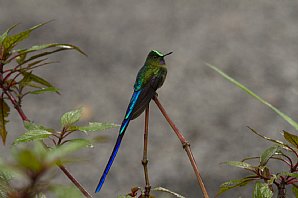
Blue and Yellow Macaw 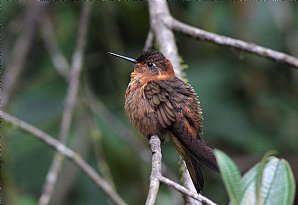
26Sept-ShiningSunbeam MG 9608-copy-DavePullan 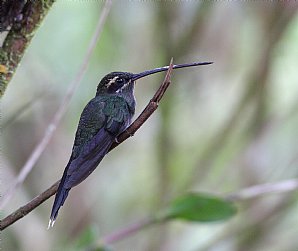
27Sept-White-whiskeredHermit MG 9807-copy-DavePullan 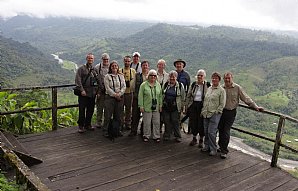
27Sept MG 9893-copy-DavePullan 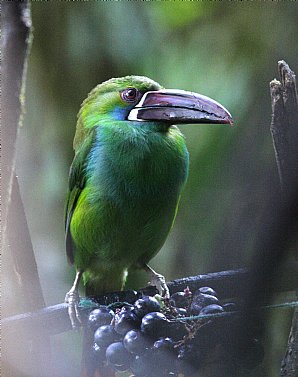
28Sept-Crimson-rumpedToucanet MG 0145-copy-DavePullan 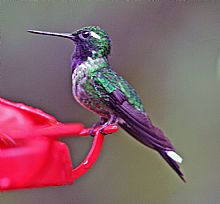
30 Purple-bibbed Whitetip male 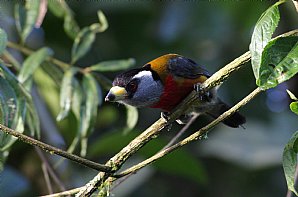
30thOctober-ToucanBarbet MG 22072-copy-DavePullan 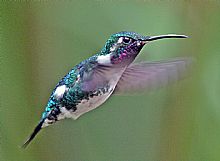
40 White-bellied Woodstar-male 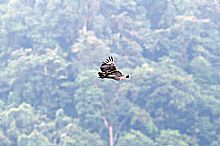
5 Black Vulture 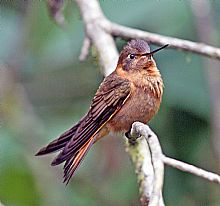
55 Shining Sunbeam 
Andean-Bear 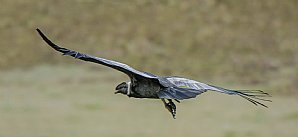
Andean-Condor-2 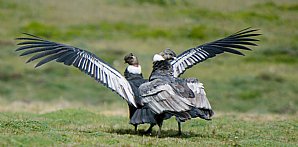
Andean-Condor 
AndeanCootyellow 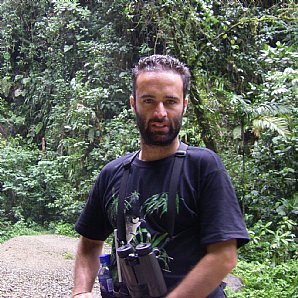
Andres-Trujillo 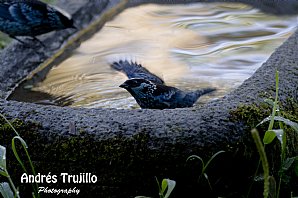
berylspangled-tanager-AT 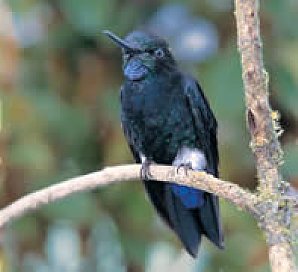
black-breasted-puffleg-sm 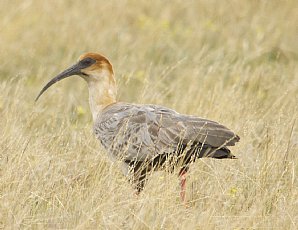
Black-Faced-Ibis 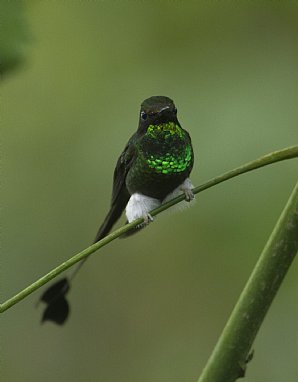
Booted-Racket-Tail 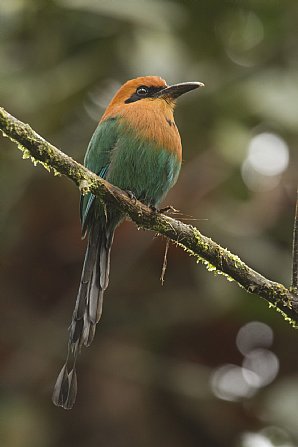
Broad-Billed-Motmot 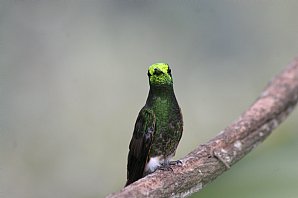
buff-tayled-coronetIMG 5931 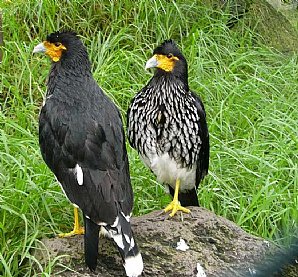
Caracara 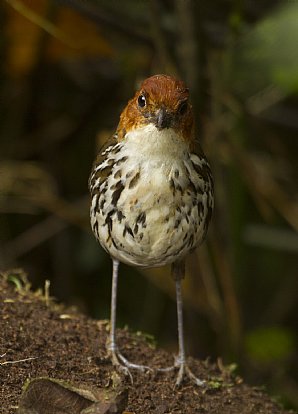
Chestnut-Crowned-Antpitta 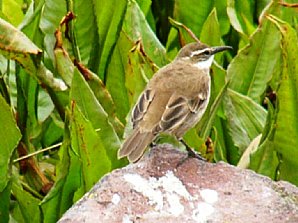
Cinclodes 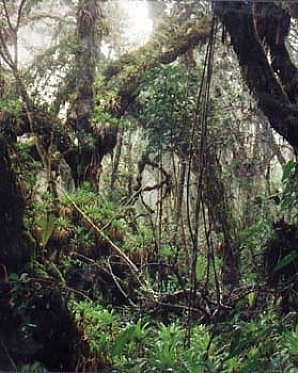
cloudforest 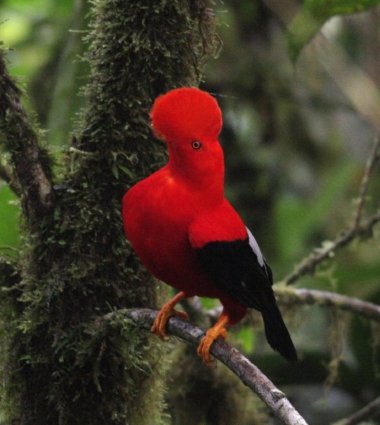
Cockoftherock 
Colibri3Cecia 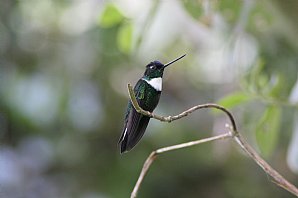
collared-incaIMG 5951 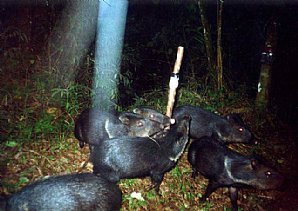
Collared-Peccary 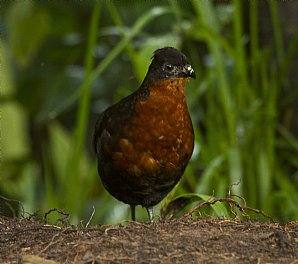
Dark-backed-Wood-Quail 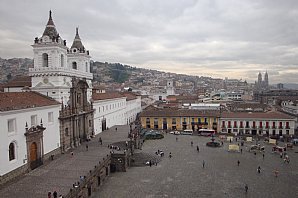
DSC03131 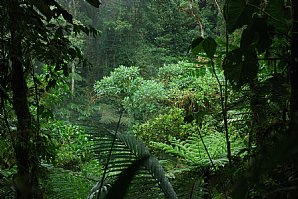
DSC 0072 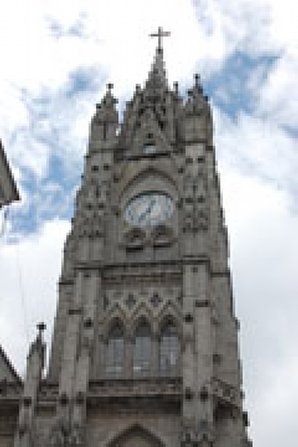
DSC 0074-QUITO 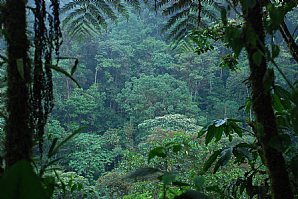
DSC 0111 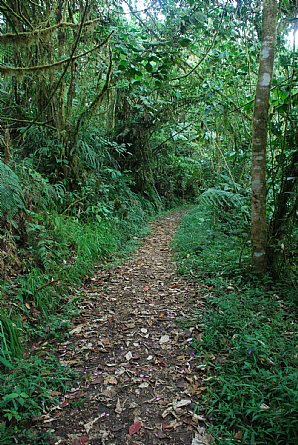
DSC 0121-2 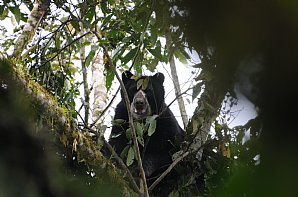
DSC 5474-Osos-Maquipucuna-Reserve-and-Ecolodge 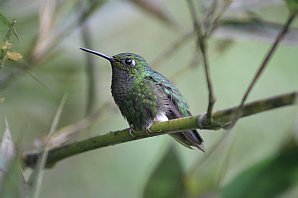
glowing-puffleg-guangIMG 5601 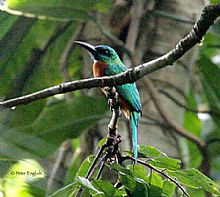
GreatJacamarNWC 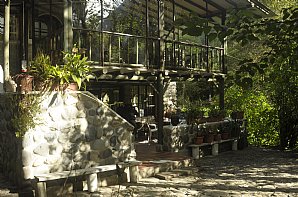
GUANGO-MAIN-HOUSE 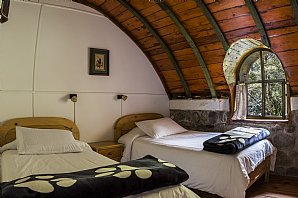
GUANGO-ROOM-Daniel-Mideros 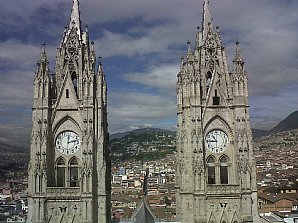
IMG-20120525-00479 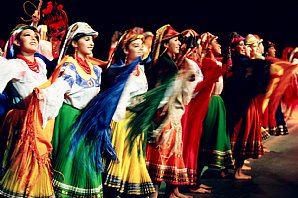
Jacchigua2 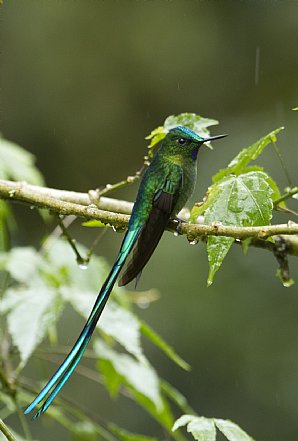
Long-Tailed-Sylph-East 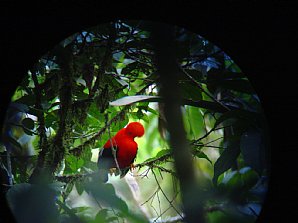
Mindo24-25SeptiembreE12 
Oilbird AsaWright 29April2016 DavePullan U7A1893-copy 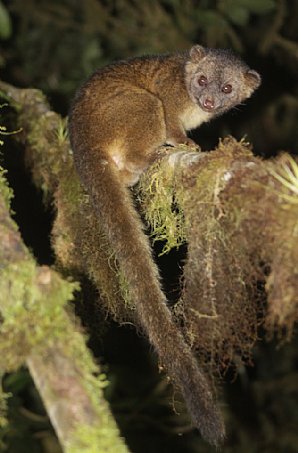
Olinguito-1 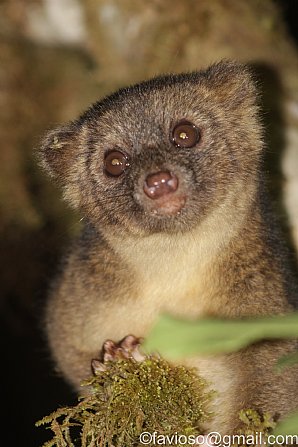
Olinguito 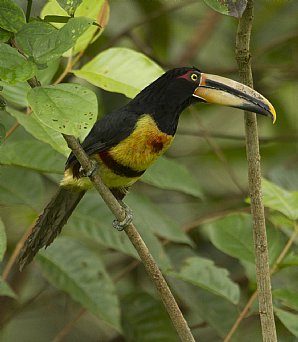
Pale-Mandible-Aracari 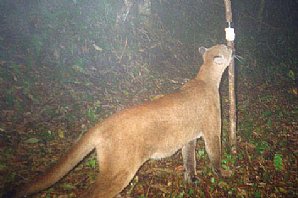
Puma 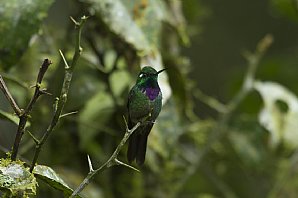
Purple-Bibbed-Whitetip 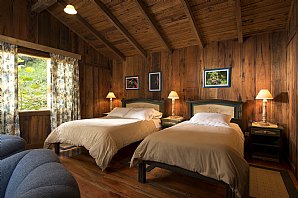
SACHATAMIA-12 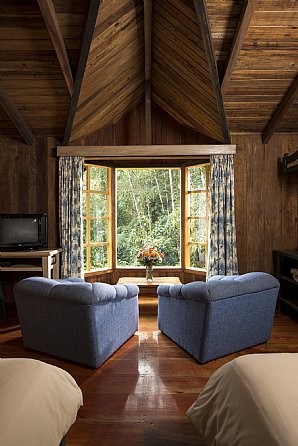
SACHATAMIA-ROOM-12 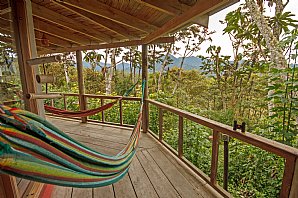
SAN-ISIDRO-20 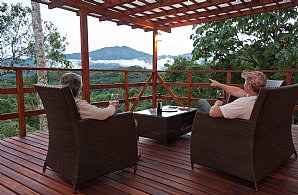
San-Isidro-main-deck 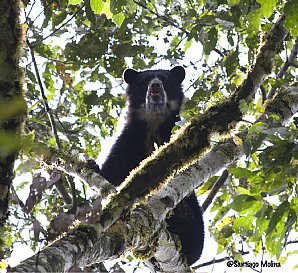
SPECTACLED-BEAR-copy 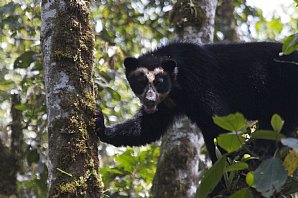
Spectacled-Bear-or-Andean-Bear 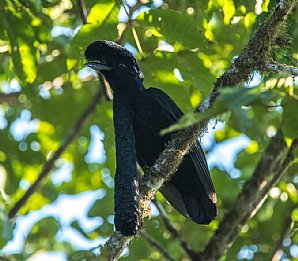
Umbrella-bird 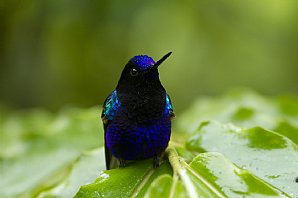
Velvet-purple-Coronet 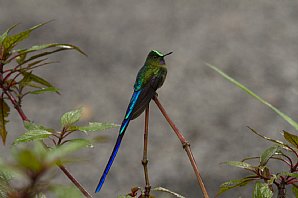
Violet-Tailed-Sylph 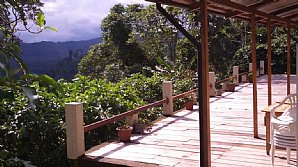
WILDSUMACO-24 
WILDSUMACO-DECK-1024 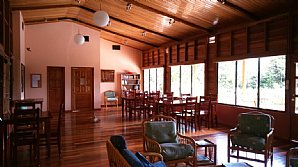
WILDSUMACO24 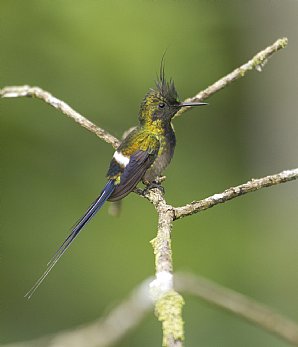
Wire-Crested-Thorntail
- Free Bird Guide
FREE copy of Birds of Ecuador with every room booked on this holiday.
- Enquire

